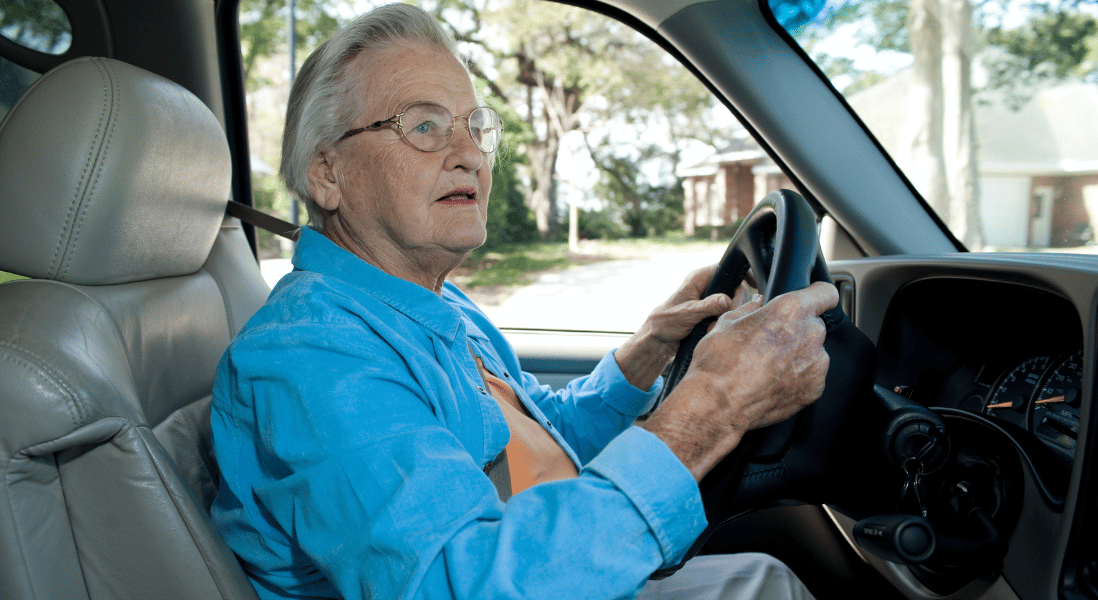Elderly drivers face unique challenges on the road, which can make driving more difficult and risky as they age. While older adults often have fewer accidents than younger drivers, age-related factors can still increase risks. By following these Essential Tips for Elderly Drivers, seniors can improve their safety and driving confidence. This article outlines seven practical strategies to help elderly drivers stay safe, remain mobile, and protect everyone on the road.

7 Essential Tips for Elderly Drivers
As we age, our driving abilities can change, and it’s crucial for elderly drivers to be aware of these changes and take steps to ensure their safety on the road. Here are 7 essential safety tips for elderly drivers:
1. Regular Health Check-Ups
Why It’s Important: Regular health check-ups can help identify any medical conditions that might affect your driving abilities. Conditions like cataracts, glaucoma, or even cognitive decline can impact your vision and reaction time.
Actionable Step: Schedule annual health check-ups with your doctor, including eye exams and cognitive assessments. Discuss any medications you’re taking and how they might affect your driving.
2. Stay Physically Active
Why It’s Important: Physical activity can help maintain strength, flexibility, and balance, all of which are essential for safe driving.
Actionable Step: Engage in regular physical activities such as walking, swimming, or light exercises. This can help improve your overall health and reduce the risk of falls or other accidents.
3. Adjust Your Vehicle
Why It’s Important: Making adjustments to your vehicle can help you stay comfortable and safe while driving.
Actionable Step: Consider using:
- Seat Belts: Always wear a seat belt.
- Seat Height: Adjust the seat height to ensure you have a clear view of the road.
- Mirrors: Adjust the rearview and side mirrors for optimal visibility.
- Pedals: Adjust the pedals to fit your leg length.
- Steering Wheel: Use a steering wheel with a comfortable grip.
4. Avoid Driving in Adverse Conditions
Why It’s Important: Adverse weather conditions or nighttime driving can be particularly challenging for elderly drivers.
Actionable Step: Avoid driving:
- In Heavy Rain or Snow: These conditions can reduce visibility and make roads slippery.
- At Night: Dim light can make it harder to see other vehicles and pedestrians.
- During Rush Hour: Heavy traffic can be stressful and increase the risk of accidents.
5. Use Technology Safely
Why It’s Important: Technology can be both a help and a hindrance for elderly drivers. Using it safely is crucial.
Actionable Step: Use:
- GPS Systems: These can help navigate unfamiliar routes.
- Bluetooth Hands-Free Devices: These allow you to make calls without taking your hands off the wheel.
- Avoid Distractions: Refrain from using your phone for non-essential tasks while driving.
6. Stay Alert and Focused
Why It’s Important: Fatigue and distractions can significantly impair your driving abilities.
Actionable Step: Ensure you get enough sleep before driving. Avoid driving if you’re feeling tired or if you’ve had a long day. Also, minimise distractions by turning off the radio or avoiding conversations while driving.
7. Consider Alternative Transportation Options
Why It’s Important: If you’re no longer comfortable driving, it’s important to consider alternative transportation options.
Actionable Step: Look into public transportation options like buses or trains. You can also consider using ride-sharing services or asking a family member or friend for a ride.
By following these 7 essential safety tips, elderly drivers can significantly reduce their risk of accidents and ensure a safer driving experience. Remember, safety is always the top priority on the road.
Additional Resources
For more information on safe driving practices for elderly drivers, you can visit the following resources:
- American Automobile Association (AAA): Provides tips and resources for safe driving.
- National Institute on Aging (NIA): Offers guidance on maintaining independence as we age.
- South African National Roads Agency (SANRAL): Provides information on road safety and driving regulations in South Africa.
By staying informed and taking proactive steps towards safety, elderly drivers can enjoy a more secure and enjoyable driving experience.
As we wrap up our discussion on essential tips for elderly drivers, it’s clear that staying safe on the road involves a combination of personal awareness and proactive measures. By prioritising regular health check-ups and staying physically active, older adults can maintain their driving capabilities longer. Additionally, adapting their vehicles and utilising modern technology can make a significant difference. It’s essential to be mindful of driving conditions and to consider alternative transportation when necessary. Remember, safe driving isn’t just about rules; it’s about ensuring peace of mind for yourself and your loved ones. So, take these essential tips to heart and embrace the freedom of the road with confidence!


